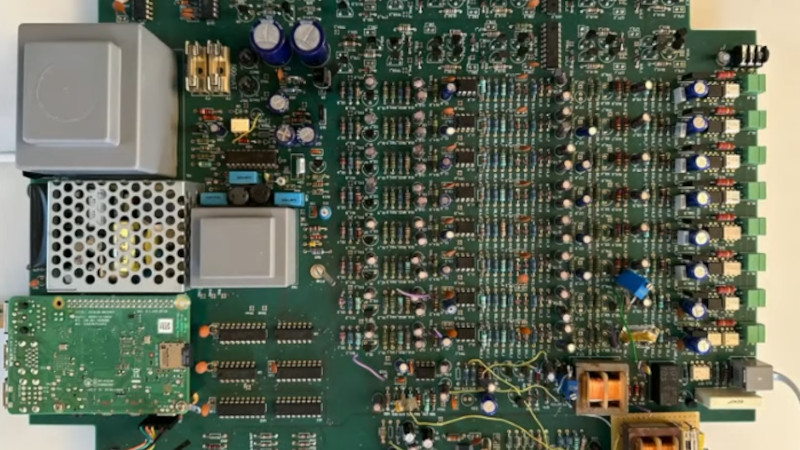Such has been the success of the mobile phone that in many places they have removed the need for wired connections, for example where this is being written the old copper connection can only be made via an emulated phone line on an internet router. That doesn’t mean that wired phones are no longer of interest to a hardware hacker though, and many of us have at times experimented with these obsolete instruments. At the recent 37C3 event in Germany, [Hans Gelke] gave a talk on the analog exchange he’s created from scratch.
The basic form of the circuit is built around a crosspoint switch array, with interfaces for each line and a Raspberry Pi to control it all. But that simple description doesn’t fully express its awesomeness, rather than hooking up a set of off-the-shelf modules he’s designed everything himself from scratch. His subscriber line interface circuit uses a motor controller to generate the bell signal, his analogue splitter has an op-amp and a transistor, and his crosspoint array is a collection of JFETs. Having dabbled in these matters ourselves, it’s fascinating to see someone else making this work. Video below the break.
Have an analogue phone but nowhere to use it? Bring it to a hacker camp!

















As a general recommendation:
watch CCC videos directly on their platform: https://media.ccc.de
Much better, YT is so annoying.
Good call, links changed.
I found something interesting the other day, looking at YT directly (e.g. Marco Reps, Plasma Channel etc) is full of ads.
But instead if I go through hackaday on the smart TV browser, then use the links, there are no ads.
It seems the browser is incapable of showing the ads – result!
Embedded videos seem to have a different ad policy?
I once had to build an electro-mechanical one using Strowger switches, while on an electrical engineering course, back in the 1980’s
Unfortunately I am unable to find the docs for the hardware. The software is on github:
https://github.com/hansgelke/retro_v3
I wonder if we ever go the opposite way — using ADC/DAC with non-linear characteristics and reference voltage high enough to handle both ringing voltage, FSK for caller id, DTMF and voice at the same time. And a multiplexer to handle 16 or 32 or 64 lines POTS simultaneously. Or an ISDN BRI. Or PRI without multiplexing. If we can adjust impedance in memory controllers, we probably can adjust impedance for different telephony standards, should there be a need, right?
Hmm, I think I just “invented” a Software Defined Telephone Switch. Which makes me think that someone probably has patented it. Oh, well, back to the drawing board ;-)
For those not wanting to build their own, Panasonic has (had?) a line of mini-PBX systems (I have a KX-TAW848) that take a POTS (or POTS-like VOIP) line in and support up to 48 DTMF, rotary or Panasonic proprietary telephone sets. Some are user-programmable, and the base units and expansion cards are available on Amazon and eBay. Current models include the KX-TDA20, 30 and 50.
I am in awe of the simplicity and functionality of POTS given the technology of the time: on/off hook detect, dialing and voice transmission all over two wires with no power required at the remote end. And then hack on DTMF dialing, caller ID and broadband while remaining compatible with all the ancient equipment ever produced.
See in America you can still plug a rotary phone in a landline and it still should work
Even my cordless phone worked when set to pulse dialing
Aint nothing but a pulse counter and a few register memory
Computer does the rest in the exchange.
No, pulsed dialing is a crapshoot in the US. It hasn’t been required for quite some time, so any equipment that’s been replaced since they stopped requiring it may or may not be able to understand it.
I achieve exactly the same facility with an RPi running RasPBX and an 8 port Grandstream ATA which works with pulse dialling telephones – even the currently produced Grandstream ATAs work with pulse dialling telephones. They have no intention of removing the facility and I’ve managed to get them to modify the firmware to work with the ‘reverse’ New Zealand’ dial.